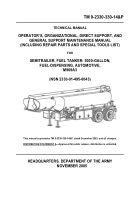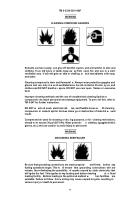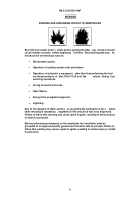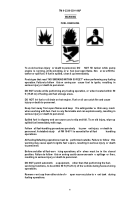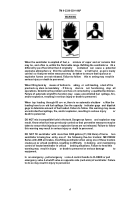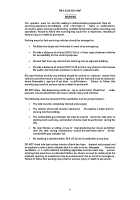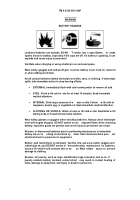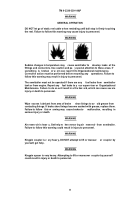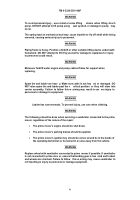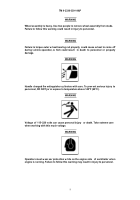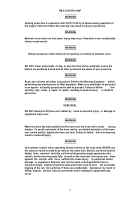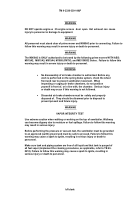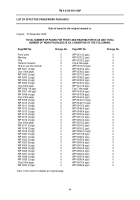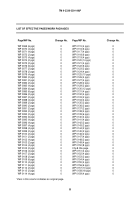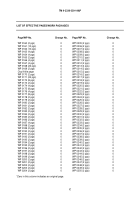TM-9-2330-330-14-P - Page 8 of 1116
TM 9-2330-330-14&P
f
WARNING
BATTERY HAZARDS
Lead-acid batteries can explode. DO NO
T smoke, hav e open flames,
or make
sparks around a battery, especially if the caps are off. If a battery is gassing, it can
explode and cause injury to personnel.
Ventilate when charging or using a battery in an enclosed space.
Wear safety goggles and acid-proof glov es when battery cover must be removed
or when adding electrolyte.
Avoid contact between battery electrolyte and skin, eyes, or clothing. If electrolyte
spills, take immediate action to stop burning effects:
•
EXTERNAL. Immediately flush with cold running water to remove all acid.
•
EYES. Flush w ith cold w ater for at least 15 minutes. Seek immediate
medical attention.
•
INTERNAL. Drink large amounts of w
ater or milk. Follow
w ith milk of
magnesia, beaten egg, or vegetable oil. Seek immediate medical attention.
•
CLOTHING OR VEHICLE. Wash at once w ith cold w ater. Neutralize w ith
baking soda or household ammonia solution.
Wear safety glasses or goggles when checking batteries. Always check electrolyte
level w ith engine stopped. DO NOT smoke or use
exposed flame when checking
battery; explosive gases are present and severe injury to personnel can result.
Remove or disconnect batteries prior to performing maintenance in immediate
battery area or w
orking on electrical sy
stem. Such disconnections prev
ent
electrical shock to personnel or equipment.
Battery acid (electroly te) is extremely harmful. Alw ays w ear safety goggles and
rubber glov es, and DO NOT smoke w
hen performing maintenance on batteries.
Injury w ill result if acid contacts skin or ey
es. Wear rubber
apron to prevent
damage to clothing.
Remove all jewelry, such as rings, identification tags, bracelets, and so on. If
jewelry contacts battery terminal, a direct short
may result in instant heating of
tools, damage to equipment, and injury or death to personnel.
Back to Top

